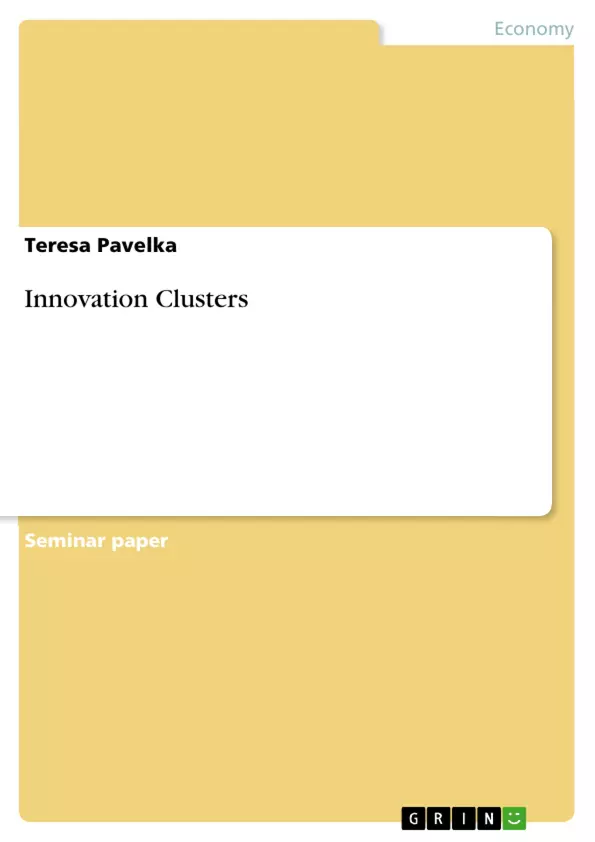Clusters are geographic concentrations of various industrial, scientific and governmental actors, and have been found to trigger and improve the innovative performance of firms inside. This paper gives a review of prevailing cluster theories, as well as several examples from the real economy. Knowledge spillovers, inter-firm linkages and reduced business risks for start-up firms present some of the advantages that foster firms’ innovative activity in clusters. The success of prominent clusters such as the Silicon Valley has encouraged governments to support the formation of clusters; however, technological changes might as well lead to failures of clusters. Despite the advances of a globalized economy, physical proximity in clusters has been shown to transmit input for innovation more successfully than virtual innovation networks.
Inhaltsverzeichnis (Table of Contents)
- Introduction.
- Cluster and location theory
- Defining clusters and cluster participants.
- Identifying regional clusters.
- Underlying theory
- Classical location and agglomeration theories
- Contemporary cluster theories
- The ceramic tile cluster in accordance with Porter's diamond model
- Clusters as trigger for innovation.
- Enhanced innovative performance in clusters.
- Knowledge spillovers, inter-firm linkages and reduced risks.
- Innovation through advantages in capital, labor and firm structure
- Cluster policy and practical recommendations.
- Failures due to retarded innovation and technological change.
- Enhanced innovative performance in clusters.
- New approaches through technological advances and globalization.
- The death of distance
- Virtual innovation networks
- Globalizing vs. localizing: the location paradox
- Conclusion and outlook
Zielsetzung und Themenschwerpunkte (Objectives and Key Themes)
This paper examines the role of clusters in fostering innovation, offering a review of prevailing theories and providing real-world examples. It aims to understand how geographic concentration of actors can drive firms' innovative activity.- The definition and identification of innovation clusters.
- Theories explaining the formation and success of clusters.
- The impact of clusters on firms' innovative performance.
- The role of policy in supporting cluster development.
- The impact of technological advances and globalization on clusters.
Zusammenfassung der Kapitel (Chapter Summaries)
- The introduction provides a general overview of the topic, outlining the importance of clusters for innovation.
- The second chapter delves into the theory of clusters and location, defining key terms and exploring different theoretical perspectives on cluster formation.
- The third chapter examines the role of clusters in driving innovation, highlighting benefits such as knowledge spillovers, inter-firm linkages, and reduced risks for startups.
- The fourth chapter explores how technological advances and globalization impact the dynamics of clusters, considering the rise of virtual networks and the “death of distance” concept.
Schlüsselwörter (Keywords)
The main keywords of this paper include innovation clusters, geographic concentration, knowledge spillovers, inter-firm linkages, reduced risks, cluster policy, technological change, globalization, virtual innovation networks, and location paradox. These terms highlight the focus on understanding how clusters contribute to innovative performance and how they are affected by evolving economic and technological landscapes.- Quote paper
- Teresa Pavelka (Author), 2014, Innovation Clusters, Munich, GRIN Verlag, https://www.grin.com/document/285839



